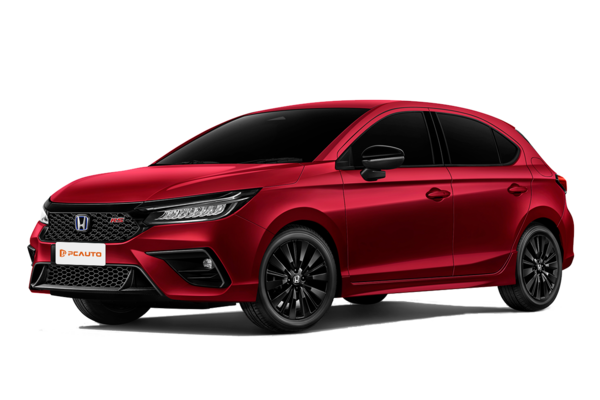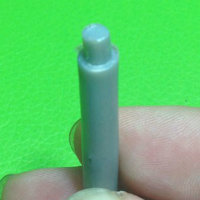Q
why is toyota so reliable
Toyota has built its reputation for reliability largely on its long-standing commitment to "lean manufacturing" principles and rigorous quality control systems. The brand places immense focus on the finer details during production, favoring time-tested technologies over chasing flashy innovations. Take, for instance, their naturally aspirated engines and conventional transmission designs – they might not be the most cutting-edge, but they're incredibly durable workhorses.
Here in Malaysia, Toyota has also adapted well to our tropical climate with targeted tweaks. Think beefed-up cooling systems and enhanced rust-proofing, all to ensure these vehicles hold up steady in our hot and humid conditions. On top of that, Toyota's supply chain management is rock-solid, meaning consistent parts quality, and let's not forget the relatively affordable maintenance costs – a big plus for Malaysian buyers who value practicality.
What's worth highlighting is that Toyota's reliability isn't some happy accident; it's the result of relentless refinement and extensive real-world road testing. Sure, other brands have their own strengths, but when it comes to long-term ownership costs and everyday usability, Toyota really delivers. It's no wonder their models tend to hold their value so well in Malaysia's used car market.
Special Disclaimer: This content is published by users and does not represent the views or position of PCauto.
Popular Models
Related Q&A
Q
What is the RPM of 10 hp?
The RPM range of a 10-horsepower engine depends on its type and application. For instance, a single-cylinder diesel engine in small generators or farm equipment might run between 1,800 and 3,600 RPM, while a high-revving motorcycle engine could exceed 8,000 RPM.
The relationship between power and RPM is determined by torque, calculated as: **Horsepower = Torque (Nm) × RPM ÷ 5,252**. This means a low-RPM engine needs higher torque to achieve the same power output, whereas a high-RPM engine produces less torque.
In everyday cars, idle speeds typically sit at 700–900 RPM, with full-throttle operation reaching over 6,000 RPM—though those engines are far more powerful than 10 hp. For small equipment, RPM selection balances efficiency and durability. Pumps or lawnmowers often use fixed-speed designs for better fuel economy, while construction gear may adjust RPM to match load demands.
For exact specs, always check the engine’s nameplate or manual—factors like air/liquid cooling or two-/four-stroke design significantly impact performance.
Q
What is the maximum hp of a car?
The current production car horsepower record is held by elite hypercar brands. Take the Bugatti Chiron Super Sport 300+ – its monstrous 8.0-liter W16 quad-turbo engine churns out 1,600 horsepower. Then there's the Koenigsegg Jesko Absolut, whose 5.0-liter V8 twin-turbo pushes 1,623 ponies when running on E85 biofuel. These extreme machines use every trick in the book: featherlight carbon fiber bodies, cutting-edge aerodynamics, and multi-turbo systems to chase those insane numbers.
But let's be real – horsepower isn't everything. Torque, drivetrain efficiency, weight, and chassis tuning matter just as much. For daily driving? A modest 200-300 hp in your average family sedan is plenty. Even performance cars in the 400-600 hp range will satisfy most speed cravings.
What's interesting is how hybrid tech is changing the game. Many modern performance cars now use electric motors to boost power while keeping efficiency somewhat reasonable. My advice? Match the horsepower to your actual needs – no point paying at the pump for power you'll never use.
Q
Can a car have 800 horsepower?
Sure thing. Right now, there are quite a few high-performance cars on the market pushing 800 horsepower or even more. These beasts usually fall into the supercar or heavily modified performance car category—think flagship models from top-tier brands or professionally tuned builds. They achieve that insane power through massive engines, turbocharging, or hybrid systems.
An 800-horsepower car is brutally quick, often hitting 0-100 km/h in under 3 seconds, but it also demands serious skill to handle, not to mention upgraded cooling and braking systems. Keep in mind, though, that this much power isn’t exactly practical for daily driving—it’s more at home on a track or special occasions. Local factors like fuel quality, road conditions, and legal restrictions also come into play.
If you’re into high-performance machines, follow expert auto media or test-drive events to experience them firsthand. Just remember to pick a car that actually suits your needs—not just the numbers on paper.
Q
What should my RPM be at 100?
When you're cruising at 100 km/h, your engine's RPM depends on several factors like transmission type, engine displacement, and gear ratios.
With a manual transmission in top gear (usually 5th or 6th), you might see the tachometer sitting between 2,500 and 3,500 RPM. Automatic transmissions, on the other hand, tend to keep revs lower—around 2,000 to 3,000 RPM—thanks to their adaptive tuning for better fuel efficiency.
Smaller turbocharged engines may run slightly higher RPMs, while larger naturally aspirated engines often maintain lower revs at the same speed. Other variables like vehicle load, road incline, and driving mode (sport vs. eco) also play a role.
Keeping RPMs in the right range during highway driving not only saves fuel but also reduces engine wear. If you notice unusually high or low revs at speed, it’s worth checking transmission fluid, clutch health, or sensors to avoid long-term issues.
Q
What vehicle has the highest horsepower?
The most powerful production car in the world right now is the Bugatti Chiron Super Sport 300+. Its monstrous 8.0-liter quad-turbo W16 engine churns out an insane 1,600 horsepower, with a top speed of 490 km/h - absolute peak internal combustion engineering.
That said, electric hypercars are starting to push boundaries too. Take the Rimac Nevera: 1,914 hp from its four-motor setup proves EVs have serious performance potential.
For us car enthusiasts, horsepower is just one piece of the puzzle. Things like torque delivery, transmission tuning, weight distribution, and aero make all the difference in real-world driving. Some high-performance SUVs might not match supercars on paper, but clever AWD systems and well-sorted suspension can deliver just as much excitement.
Truth be told, excessive power means little in daily driving. Reliability, fuel efficiency, and safety tech matter far more to most buyers. At the end of the day, a well-balanced package always wins.
Q
How to convert RPM into power?
Converting RPM (revolutions per minute) to power (usually measured in horsepower or kilowatts) requires factoring in engine torque, because power is calculated as: Power (kW) = Torque (Nm) × RPM ÷ 9549, or Power (HP) = Torque (lb-ft) × RPM ÷ 5252. Simply put, the torque an engine produces at a given RPM determines its power output—so you can’t translate RPM into power without torque data.
Different engines have distinct torque curves. A turbocharged motor, for example, might deliver peak torque at lower RPMs, while a naturally aspirated engine often needs higher revs to hit its max power. Real-world performance also depends on transmission and drivetrain efficiency, which is why two cars with the same horsepower can feel totally different on the road.
For a deeper dive, check out an engine’s powerband curve—it maps how torque and power relate to RPM, showing where the engine performs best. That’s the key to understanding what really happens under the hood.
Q
What is the RPM of a 747 jet engine?
The jet engines on a Boeing 747 typically operate between 2,000 and 6,000 RPM, depending on the engine model and flight phase. For example, during takeoff—when thrust is at its peak—the RPM climbs toward the upper limit, while cruising speeds are lower to save fuel. Unlike car engines, the core of a jet engine (high-pressure compressor and turbine section) can spin at over 10,000 RPM. But thanks to gear reduction systems or fan design, the external low-pressure fan runs at a slower speed, which is partly why the 747 sounds relatively quiet.
If you’re into aviation tech, it’s worth comparing modern high-bypass turbofans with older turbojets—the former prioritizes fuel efficiency and noise reduction, explaining why newer planes like the A350 or 787 are quieter and more economical. Also, while a car’s tachometer might show up to 8,000 RPM, jet engines deliver power completely differently, relying on high-speed airflow rather than piston movement. Just one of those cool differences between aerospace and automotive engineering.
Q
Which car has 7000 RPM?
Many high-performance cars and some sporty sedans can rev up to 7,000 RPM—think models like the Honda Type R series, Subaru WRX STI, and Mazda MX-5 Miata. Their engines are specially tuned to deliver stronger power at higher revs. These high-revving mills typically feature lightweight pistons, reinforced crankshafts, and optimized valvetrains to ensure reliability under extreme conditions.
For driving enthusiasts, a high-RPM engine offers sharper throttle response and a more visceral experience. Just keep in mind they demand extra care—regular oil changes and cooling system checks are crucial to prevent wear from heat and stress.
If you’re into these cars, scout local used markets or dealerships; well-maintained performance models do pop up occasionally. On a test drive, pay attention to how the engine pulls in the upper rev range—that’s where the real character shines.
Q
Does a bigger engine mean more power?
Generally speaking, a larger engine displacement does allow for more power, since bigger cylinders can burn more fuel and release more energy. But it's not that simple anymore. Thanks to modern tech like turbocharging, direct injection, and variable valve timing, today's smaller engines can punch way above their weight. Take some 1.5L turbocharged mills - they're now matching the muscle of old-school 2.5L naturally aspirated engines while sipping less fuel.
That said, power output isn't just about displacement. Factors like engine tuning, compression ratio, and airflow efficiency play huge roles. Performance cars take it further with lightweight materials and aerodynamic tricks to squeeze out every last drop.
When you're car shopping, don't just fixate on displacement. Look at the torque curve, how the transmission plays with the engine, and most importantly - how it actually feels on the road. For daily driving, an engine with strong low-end grunt is often more usable than a high-revving powerhouse, especially when you're crawling through traffic.
Q
Is PS the same as HP?
PS and HP are both units for measuring engine power, but they aren’t exactly the same. PS (Pferdestärke) is the German standard, while HP (Horsepower) is the British/American measurement. One PS is roughly 0.986 HP—close, but not identical. You’ll usually see PS in European and Asian car specs, whereas HP dominates in the US and UK markets. So always check the units when comparing numbers to avoid confusion.
Besides PS and HP, power can also be listed in kilowatts (kW). One PS equals about 0.735 kW, and many countries—including ours—are increasingly using kW as the standard for consistency. Converting between units helps when cross-checking performance figures, especially if you’re comparing cars from different regions. Just remember: numbers only tell part of the story. Factors like torque, transmission tuning, and vehicle weight all shape how a car actually feels on the road. So while power matters, it’s not the only thing to consider when choosing a car.
Popular Cars
Model Year
Car Compare
Car Photo
Latest Q&A
Q
What is the rpm of 180 hp motor?
The powerband of a 180-horsepower engine varies by model and intended design. Naturally aspirated engines typically hit peak power at 6,000-7,000 rpm, while turbocharged units like common 1.5T or 2.0T engines often deliver maximum punch between 5,000-6,000 rpm.
Remember the horsepower equation "HP = Torque × RPM ÷ 5252"? That's why modern turbo engines feel punchier at lower revs while sipping less fuel - they're making the same power with fewer revolutions.
Real talk though: you'll rarely need to wring it out to redline in daily driving. Most scenarios call for just 3,000-4,000 rpm for decent shove. Holding high revs constantly? That's just wearing out your engine faster.
Brands tune these differently too - some prioritize low-end grunt for city crawling, while others build power up top for highway passing. Match your right foot's personality when choosing.
Q
What is the rpm of a 10 hp motor?
The RPM of a 10-horsepower (hp) motor depends on its type and intended use. Typically, standard AC induction motors run between 1,450 and 2,900 RPM, while DC or variable-frequency motors may have a wider range—check the nameplate or technical manual for specifics.
In automotive applications, like small generators or auxiliary systems, a 10-hp motor’s speed is often matched to the vehicle’s needs. For example, certain booster pumps or cooling fans might operate between 1,800 and 3,600 RPM.
Keep in mind that horsepower (hp) and RPM aren’t directly linked. HP reflects power output, while RPM depends on factors like pole count and supply frequency (e.g., a 4-pole motor in a 50Hz region runs around 1,440 RPM). If you’re swapping or modifying a motor, always verify the torque curve and load requirements to avoid efficiency losses or damage.
Also, in EVs or hybrids, motors often run at much higher speeds (8,000 RPM or more), though these systems usually rate power in kilowatts (kW)—just remember 1 hp ≈ 0.746 kW for conversion.
Q
How to convert HP into RPM?
To convert horsepower (HP) to RPM, you need to understand their relationship—but there’s no direct conversion since HP measures power while RPM reflects crankshaft speed. Torque bridges the gap. The formula is:
**HP = (Torque × RPM) / 5252** (with torque in lb-ft).
Rearrange it to solve for RPM:
**RPM = (HP × 5252) / Torque**.
For example, an engine making 200 HP at 300 lb-ft of torque hits roughly 3500 RPM at that output.
Keep in mind:
- Engines have unique powerbands—peak HP and torque rarely align at the same RPM.
- Turbocharging, aspiration, and transmission gearing all alter how power translates to wheel speed.
- Real-world performance isn’t just about this math; check the dyno curve and drivetrain setup for the full picture.
Q
What is the rpm of a 60 hp motor?
A 60-horsepower engine's RPM range depends entirely on its design and application. For small gasoline engines, you're typically looking at 6,000-8,000 RPM to hit 60 hp. Diesel mills, with their torque advantage, can achieve the same power at just 3,000-4,500 RPM - check the manufacturer's power curve for exact figures.
Remember, horsepower doesn't scale linearly with RPM. Cylinder count, induction type (naturally aspirated vs. forced induction), and fuel delivery all play major roles. Take turbocharged engines - they'll deliver peak power at significantly lower revs.
For daily driving, most cars operate most efficiently in the 2,000-3,000 RPM sweet spot where power and fuel economy balance out. Want specifics on your ride? Crack open the owner's manual or hook up an OBD scanner. Tuning enthusiasts can always flash the ECU to alter power delivery, but be warned - that warranty won't honor itself, and reliability might take a hit.
Q
How many rpm is a 2 hp motor?
There’s no fixed direct relationship between a motor’s RPM and its horsepower (HP), as rotational speed depends on factors like motor design, load conditions, and power supply frequency. For example, a 2 HP AC motor under a 50Hz power standard (common in household or industrial use) typically has a synchronous speed of around 1500 RPM or 3000 RPM—determined by its pole count (4-pole or 2-pole)—though actual operating speed may drop slightly under load.
For DC or brushless motors, the RPM range can vary more widely, so always check the specs for the specific model. Application also plays a role: a 2 HP motor for pumps or fans usually runs at moderate speeds, while power tools may prioritize higher RPMs.
When selecting a motor, don’t just focus on power—consider torque, efficiency, and rated speed to match real-world needs. For precise figures, consult the manufacturer’s datasheet or a technical expert.
View MoreLatest News

Wuling Bingo EV 2025 model launched in Malaysia, adding a strong contender to the entry-level pure electric market
AshleyDec 24, 2025

For safety reasons, the Chinese government may ban fully concealed door handle designs
MichaelDec 24, 2025

"Consumer Reports" Used Car Reliability Rankings Released: Lexus and Toyota Perform Steadily, Continue to Lead
AshleyDec 24, 2025

Zeekr's First Anniversary in Malaysia: Over 2,000 Deliveries, High-Performance Car 7X Becomes a Highlight
Kevin WongDec 24, 2025

Volkswagen ID. UNYX 08 debuted, featuring Xpeng intelligent technology for the first time
JohnDec 24, 2025
View More




 Cars
Cars














